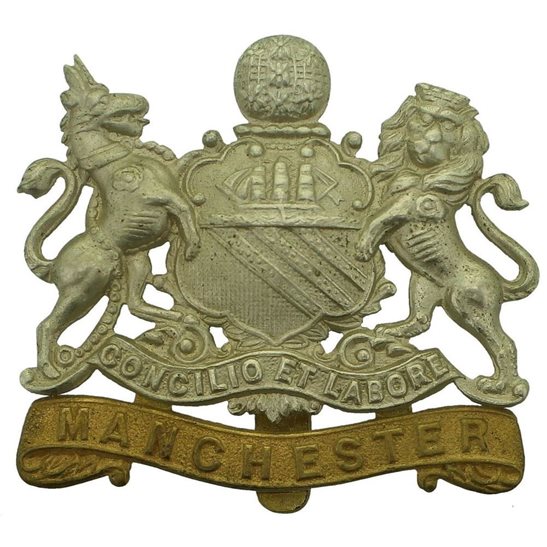Personal Details
Born: In 1869 in Whitchurch, Shropshire and baptised on 8 October the same year in St. Alkmund’s Parish Church, Whitchurch.
Family: He was the second of seven children born to James Williams, a carter, and his wife Harriett E. He married Sarah Agnes McClusky (nee Darlington) on 8 December 1894 at the Parish Church, Ashton-under-Lyne, Lancashire. They had one child together – Leonard Gordon; Richard had a step-daughter, Sarah Agnes, from Sarah’s previous marriage.
Residence: From the time of his baptism until at least 1881 he lived with his family in Green End, Whitchurch. By 1901 and now married, Richard lived at 7 Hodgson Street, Ashton-under-Lyne; by 1911 he was living at 199 Moss Street, Ashton-under-Lyne. This is the last address that can be located for him.
Employment: In 1901, 1911 and 1914 he was a general labourer. We do know that he served with the Manchester Regiment (three separate periods) between 1888 and 1916
Died: In 1926 in Ashton-under-Lyne, aged 57.
Military Details
Regiment: Manchester Regiment
Rank: Private
Service Number: 2705
Date of Enlistment: 17 August 1914
Date of Discharge: 6 June 1916
Reason for Discharge: No longer physically fit for war service
Other Information: Richard had previously served with the Manchester Regiment (2413) between 16 October 1888 and 31 October 1901 (including service in the Boer War) and 5 November 1901 and 4 November 1905. He served in the Balkans in September and October 1915.
Richard was awarded the Campaign Medals (1914/15 Star, British War Medal and Victory Medal) and the Silver War Badge number 204137

The 1914 Star (also known as 'Pip') was authorised under Special Army Order no. 350 in November 1917 and by an Admiralty Fleet Order in 1918, for award to officers and men of the British and Indian Expeditionary Forces who served in France or Belgium between 5 August and midnight of 22–23 November 1914. The former date is the day after Britain's declaration of war against the Central Powers, and the closing date marks the end of the First Battle of Ypres.
The 1914–15 Star (also known as 'Pip') was instituted in December 1918 and was awarded to officers and men of British and Imperial forces who served against the Central European Powers in any theatre of the Great War between 5 August 1914 and 31 December 1915. The period of eligibility was prior to the introduction of the Military Service Act 1916, which instituted conscription in Britain.
The British War Medal (also known as 'Squeak') was a silver or bronze medal awarded to officers and men of the British and Imperial Forces who either entered a theatre of war or entered service overseas between 5th August 1914 and 11th November 1918 inclusive. This was later extended to services in Russia, Siberia and some other areas in 1919 and 1920. Approximately 6.5 million British War Medals were issued. Approximately 6.4 million of these were the silver versions of this medal. Around 110,000 of a bronze version were issued mainly to Chinese, Maltese and Indian Labour Corps. The front (obv or obverse) of the medal depicts the head of George V. The recipient's service number, rank, name and unit was impressed on the rim.
The Allied Victory Medal (also known as 'Wilfred') was issued by each of the allies. It was decided that each of the allies should each issue their own bronze victory medal with a similar design, similar equivalent wording and identical ribbon. The British medal was designed by W. McMillan. The front depicts a winged classical figure representing victory. Approximately 5.7 million victory medals were issued. Interestingly, eligibility for this medal was more restrictive and not everyone who received the British War Medal ('Squeak') also received the Victory Medal ('Wilfred'). However, in general, all recipients of 'Wilfred' also received 'Squeak' and all recipients of The 1914 Star or The 1914/1915 Star (also known as 'Pip') also received both 'Squeak' and 'Wilfred'. The recipient's service number, rank, name and unit was impressed on the rim.

The Silver War Badge was issued in the United Kingdom and the British Empire to service personnel who had been honourably discharged due to wounds or sickness from military service in World War I. The badge, sometimes known as the "Discharge Badge", the "Wound Badge" or "Services Rendered Badge", was first issued in September 1916, along with an official certificate of entitlement.

